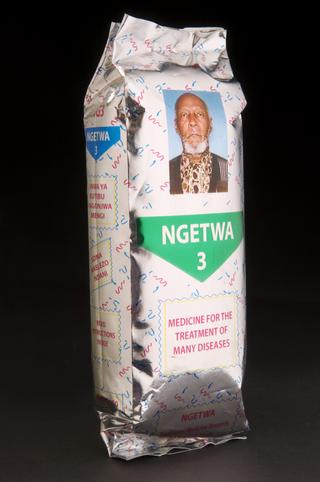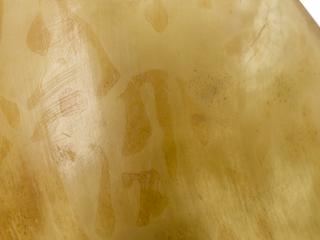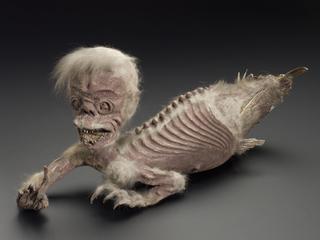




Flint nodule in form of leg and foot, carried as charm against gout, probably English, 1870-1925
The growing influence of biomedicine in the 1800s did not necessarily replace established forms of treatment based on belief and superstition. What could be referred to as folk medicine – customs that often went back generations – continued to be practised. For example, this piece of flint shaped like a human leg and foot was carried in the pocket of a person with gout in an attempt to cure the condition. It was believed that the pain was transferred from person to stone.
It is shown here with two other examples (A665264 and A665276).
Details
- Category:
- Ethnography and Folk Medicine
- Collection:
- Sir Henry Wellcome's Museum Collection
- Object Number:
- A38134
- Materials:
- stone, flint
- Measurements:
-
overall: 35 mm x 194 mm x 70 mm, .326 kg
- type:
- flint nodule
- credit:
- Head, A.




